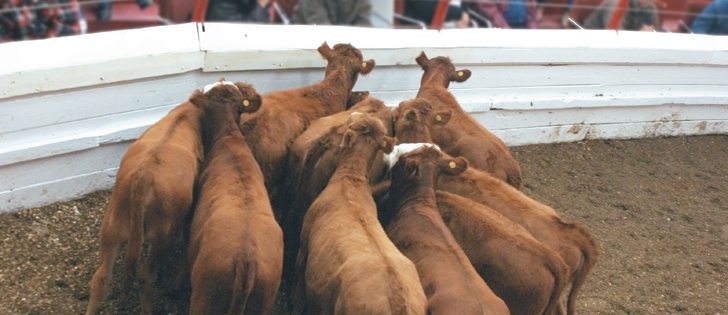Failing to meet standards | Animal expert says many facilities are poorly designed and staff training is lacking
NASHVILLE, Tenn. — Auction markets may need to beef up their animal welfare practices.
“We have discovered some real issues and concerns from a welfare standpoint,” says animal behaviourist Ron Gill of Texas A & M University.
“A lot of them don’t know how close they are to being in a lot of trouble.”
Gill has been visiting livestock markets for the last six years assessing problems with animal care, flow of livestock, facility design and staff training.
“We found simple things facilities could do to make a difference in the flow of cattle in those facilities,” he told the National Cattlemen’s Beef Association convention held in Nashville Feb. 3-7.
Read Also

Feds propose overhaul of chronic wasting disease control program
Chronic Wasting disease control program getting updated by Canadian Food Inspection Agency with feedback encouraged from producers.
Sometimes all that was needed was to change where people stood, make repairs to equipment or improve lighting.
“We found gates that have been hung backwards for 25 years,” he said.
However, it is a tradition bound sector, and resistance to change is common. Training videos on animal handling are often present, but often no one looks at them.
“It is amazing how much resistance to change there is in auction markets, but it is no different there than it is anywhere else,” he said.
Public stockyards are wide open, and activist groups could easily enter and capture bad things happening on video. An auction market could find itself the subject of the next expose.
Jennifer Woods of Blackie, Alta., who offers animal welfare audits and training about livestock handling and facility design, said auctions are vulnerable in Canada and the United States. Different regions face different problems, and facilities differ.
Some facilities are old and were not designed for good animal movement. There are 90 degree turns, dimly lit alleys and a wide variation in animal handler experience.
As well, auctions do not choose what kind of livestock they sell and must deal with problem animals when they arrive.
Downer animals should never be sent to an auction barn, but accidents can happen because large volumes of livestock move through the system.
“They don’t know what is coming until they come to the door,” she said.
Woods believes in education rather than enforcement, but people have to be open to training. Many auction companies are proactive and have initiated changes in the way animals are treated.
However, markets have not been audited for animal care because no benchmarking studies have been done to measure people skills and facility design.
“We would need to benchmark auction markets first before audits are done. We really don’t know,” she said.
“As an industry, we have to make sure we are clean.”
The Livestock Markets Association of Canada has a code of marketing standards and principles, which says auctions need to “provide adequate, humane and serviceable facilities.” They must also maintain standards to promote animal health and prevent spread of disease.
















